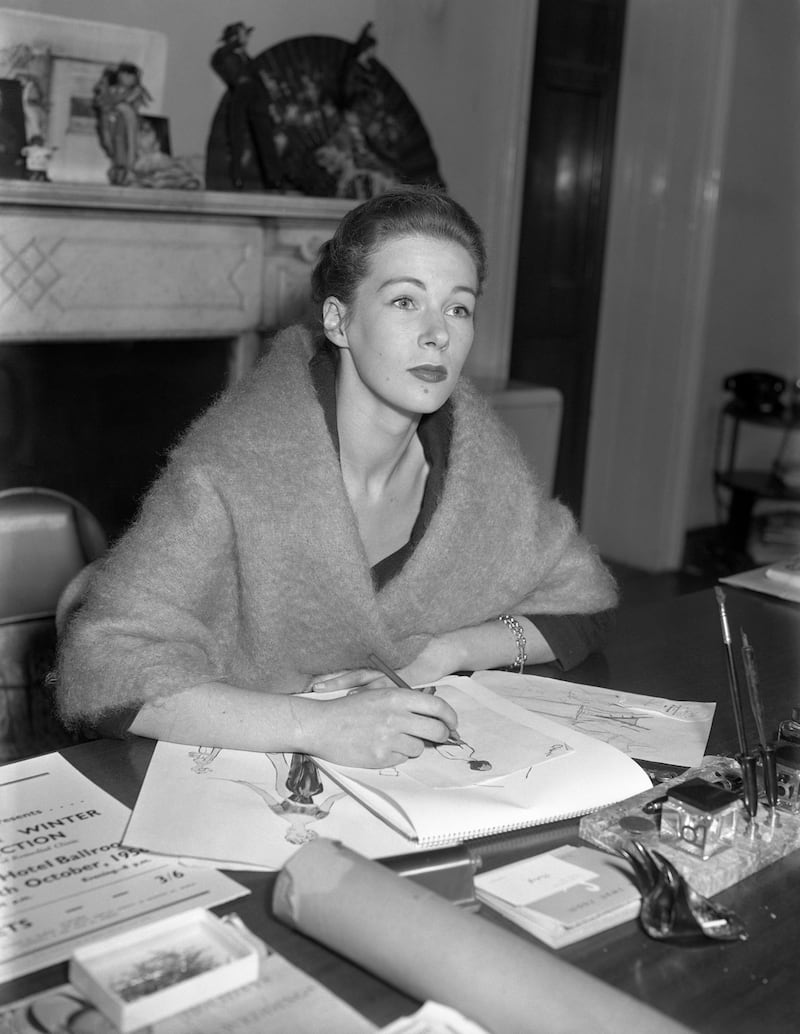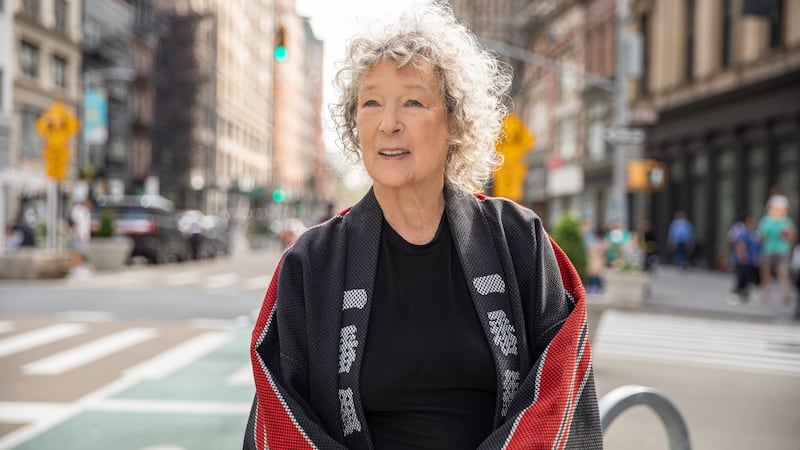“It’s important that your house takes care of you, not that you take care of your house,” says the New York-based Irish designer known simply as Clodagh. The design philosophy of the Sligo-born interior designer, who has projects in 24 countries, is “to make people happy and comfortable in their environment”.
“I try to design the frustrations out of people’s lives. The best thing about being a designer is when clients call you up and tell you that their lives have changed and family relations are better because of what we’ve done,” she says.
The Clodagh Design studio in Manhattan has a staff of about 20, with a portfolio that ranges from homes to hotels, spas, restaurants, shops, offices, luxury yachts and private jets. Clodagh has worked for clients such as Robert Redford and Elizabeth Arden, and completed projects including the Dupont Circle Hotel in Washington DC, the luxurious high-rise condominiums in Caledonia in New York, the Avery building in San Francisco and the Six Senses Douro Valley spa in Portugal.
In Ireland, she has designed a house on Dalkey’s Sorrento Terrace, the White Horses Spa at the Trump International Hotel and Golf Links in Doonbeg, Co Clare, and a converted cow shed holiday home for her son Tim O’Kennedy in Co Cork.
The Clodagh Collection includes bespoke pieces used in design projects, but her studio has also developed ranges of outdoor furniture, rugs, fabrics, wall coverings, bathroom accessories and small sculptural objects. An early adopter of the Feng Shui principles of celebrating the senses and representing all the elements (earth, fire, wood, metal and water) in design, she describes herself as an environmentalist, and has been a vegan since the 1980s.
“I like sturdy and strong, sexy and tactile – things that last and are not dancing up and down for attention. I can’t bear the word trend,” she explains in a new documentary for RTÉ. Directed by Oda O’Carroll and made by A Curious Dog Films Production, the programme is a compelling look back over Clodagh’s colourful life, remarkable career and extraordinary work ethic.
Christened Clodagh Fionnuala Maev De Sillery Phipps, she grew up the third child of John Peddar Phipps and Anna Claire De Sillery Phipps in five different homes, including the summer house of Oscar Wilde’s family in Cong, Co Mayo, and WB Yeats’s uncle’s home. She describes her family as “downwardly mobile”, selling the family silver so their children could attend boarding schools.
Recovering on the flat of her back from a life-threatening fall from a horse as a teenager, Clodagh (she ditched her extended names after the embarrassment of hearing them read out during her Intermediate Certificate examinations) decided to become a fashion designer when she noticed an advertisement for the Grafton Academy of Fashion Design while reading The Irish Times. Although her father disapproved of her career choice, her mother loaned her £400 to start her off.
After completing the course, Clodagh set up her studio first on Dublin’s South Anne Street and later on Baggot Street, and had her first fashion show in the Hibernian Hotel in 1956. With her Clodagh of Dublin brand, she became the youngest member of the Irish Haute Couture Group alongside Ib Jorgensen, Sybil Connolly, Neillí Mulcahy and Irene Gilbert.

Through the late 1950s and 1960s, her meteoric rise to prominence as a young Irish fashion designer of Irish tweeds, knits and crochets exporting to Australia, New Zealand, the United States, France and Germany ran parallel with her marriage to advertising executive Desmond O’Kennedy and the births of her three children, Tim, Stephen and Peter. By the time she was 27, she had realised she wasn’t happy in her marriage and because divorce wasn’t available in Ireland, she had to live with her husband for the next five years while awaiting a legal separation.
In 1971 a chance meeting with screenwriter Daniel Aubry in the glitzy town of Mojácar in Spain sparked a relationship that would endure for more than 50 years. The couple initially moved to New York where Clodagh continued to work as a fashion designer for a time, and her children visited for the holidays while attending school in Ireland.
Then Aubry’s shift into the property business saw them move to Spain where Clodagh began her career as an interior designer. In the documentary, she describes seeing the sunlight filter through the dust as demolition began on their new home as the moment she found her true vocation. While living in Spain for the next seven years, she designed restaurants, pubs, apartments and houses.
When the couple returned to New York in the early 1980s, she and two colleagues opened the design studio and small design store in the East Village, Clodagh, Ross and Williams. Vogue magazine described it as the “design store of the decade”.
As the years rolled on, Clodagh became one of America's most successful interior designers with a plethora of awards including induction into the Interior Design Magazine Design Hall of Fame. She was also named as one of the top 100 designers in the world by Architectural Digest.
Now at the age of 82, she still works 11-hour days in her design studio. Her husband, Daniel Aubry, describes her as a “force of nature”. Her youngest son, Peter O’Kennedy, who lives with his family two doors’ down from her in New York, is now artistic director of Clodagh Designs.
She has written three books on interior design, Total Design (2001), Your Home, Your Sanctuary (2008) and Life-Enhancing Design (2019).

The four Cs
Speaking to The Irish Times over Zoom from her studio in New York, she reiterates her four Cs as the starting point for designing your space. “Contemplate: where you are now and where to want to go. Cleanse: do some mental and physical de-cluttering (get rid of the terror of antiques and old stuff you grew up with). Clarify: make three lists – your must-haves, your would-be-nices and something fantastic (your wish list). And then, Create,” she explains.
She’s all on for people jumping straight to their wish list, by putting in a fountain in the hall or buying something that will really enhance their lives, like a beautiful piece of art or a particularly good television or sound system.
Her passion for art, music, movies, travel and cooking sustains her, she says, and personal tragedy (her middle son, Steve, died at the age of 23) and her own near-death experiences (a fall on a building site in Portugal and some scary flights) have grounded her. “I’ve had some serious accidents which prods you into an awareness that life is beautiful and not to linger on absurdities,” she says.
Her involvement with the Thorn Tree project, which fundraises for the education of children in the nomadic Samburu tribe in northeast Kenya, is also very important to her.
An early interest in Buddhism has developed into a lifelong interest in astrology, minimalism and the incorporation of nature into design. She believes clutter can undermine serenity, but the minimalism should not be self-denying. She asks everyone she encounters what their star sign is.
Sustainability is also a priority. “We have a ‘give-away’ bin at home for things we are not using. Accumulation is dangerous. I like to give away one thing each day,” she says.
Clodagh, a documentary on the life of trailblazing Irish designer is on RTÉ One television on Thursday, May 5th, at 10.15pm












